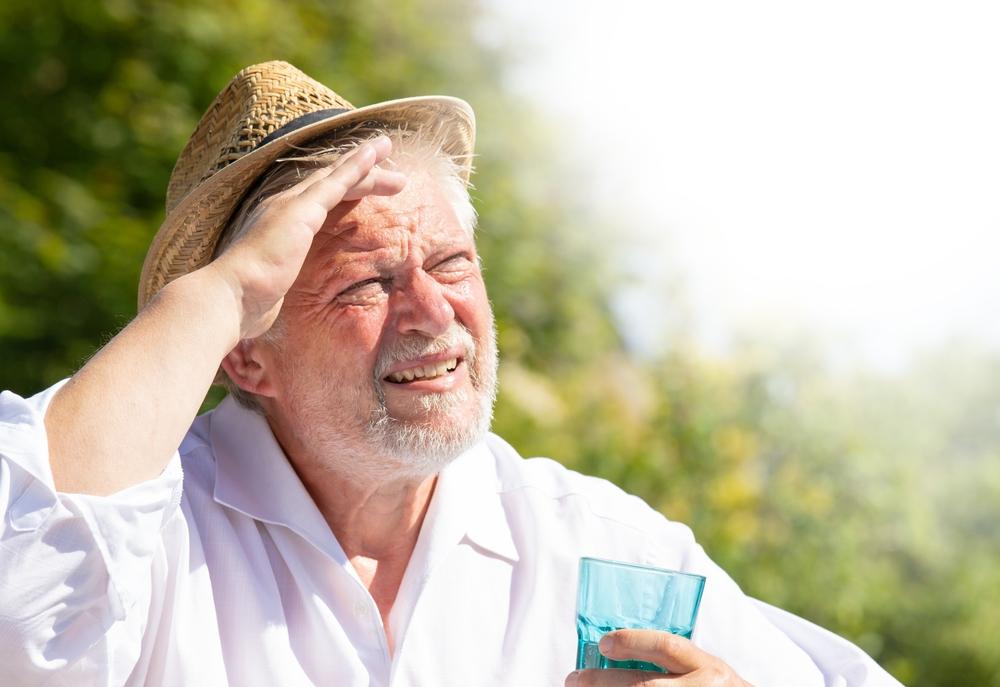Health
Expert Insights on Preventing Heatstroke and Cooling Foods

In a recent episode of the “Health 1+1” program, Chen Junru, director of the Wonderful TCM Clinic in Taiwan, provided valuable guidance on preventing and treating heatstroke. He also highlighted specific foods that can help cool the body during hot summer months. As temperatures rise, the body’s ability to regulate its temperature becomes crucial. Without effective cooling mechanisms, individuals are at risk of developing heatstroke, a serious condition that can lead to severe health complications.
Understanding Heatstroke: Stages and Symptoms
According to Chen, heatstroke can progress through three distinct stages, each marked by specific symptoms and causes. Early awareness of these symptoms is vital for timely intervention.
The first stage is characterized by Heat Cramps. Symptoms include involuntary muscle contractions causing significant pain, typically lasting from one to three minutes. Common areas affected are the thighs, calves, arms, and abdomen, where individuals may experience tightness or spasms. This condition often arises from prolonged physical activity in a hot and humid environment, especially when hydration is inadequate. Excessive sweating leads to a loss of electrolytes, resulting in painful muscle cramps.
The second stage, Heat Syncope, presents symptoms such as dizziness, nausea, and temporary loss of consciousness. This occurs when individuals stand for extended periods in high temperatures. To cool down, blood vessels near the skin dilate, causing blood to pool in the limbs and reducing blood flow to the brain, which can lead to fainting.
The third stage is Heat Exhaustion, which manifests through profuse sweating, fatigue, weakness, and shortness of breath. This condition results from excessive sweating without proper hydration or electrolyte replenishment. If untreated, it can escalate to circulatory failure.
Traditional Chinese Medicine and Heatstroke
From the perspective of Traditional Chinese Medicine (TCM), Chen emphasized that heatstroke can be classified into two categories with different underlying causes. This classification enables practitioners to tailor treatments that address the specific type of heat-related illness a patient may be experiencing.
In addition to medical interventions, Chen recommends incorporating cooling foods into one’s diet during hot weather. These foods can help lower the body’s internal temperature and promote overall well-being. Items such as watermelon, cucumber, and mint are often suggested for their natural cooling properties.
Understanding the symptoms and preventive measures related to heatstroke is crucial during the warmer months. Individuals are advised to stay hydrated, avoid prolonged exposure to high temperatures, and pay attention to their body’s signals. By recognizing the early signs of heat-related illnesses, effective interventions can be implemented to prevent serious health consequences.
-

 Technology5 months ago
Technology5 months agoDiscover the Top 10 Calorie Counting Apps of 2025
-

 Health2 months ago
Health2 months agoBella Hadid Shares Health Update After Treatment for Lyme Disease
-

 Health3 months ago
Health3 months agoErin Bates Shares Recovery Update Following Sepsis Complications
-

 Technology4 months ago
Technology4 months agoDiscover How to Reverse Image Search Using ChatGPT Effortlessly
-

 Technology1 month ago
Technology1 month agoDiscover 2025’s Top GPUs for Exceptional 4K Gaming Performance
-

 Technology2 months ago
Technology2 months agoElectric Moto Influencer Surronster Arrested in Tijuana
-

 Technology5 months ago
Technology5 months agoMeta Initiates $60B AI Data Center Expansion, Starting in Ohio
-

 Technology5 months ago
Technology5 months agoRecovering a Suspended TikTok Account: A Step-by-Step Guide
-

 Health4 months ago
Health4 months agoTested: Rab Firewall Mountain Jacket Survives Harsh Conditions
-

 Lifestyle5 months ago
Lifestyle5 months agoBelton Family Reunites After Daughter Survives Hill Country Floods
-

 Technology4 months ago
Technology4 months agoHarmonic Launches AI Chatbot App to Transform Mathematical Reasoning
-

 Technology3 months ago
Technology3 months agoUncovering the Top Five Most Challenging Motorcycles to Ride





















